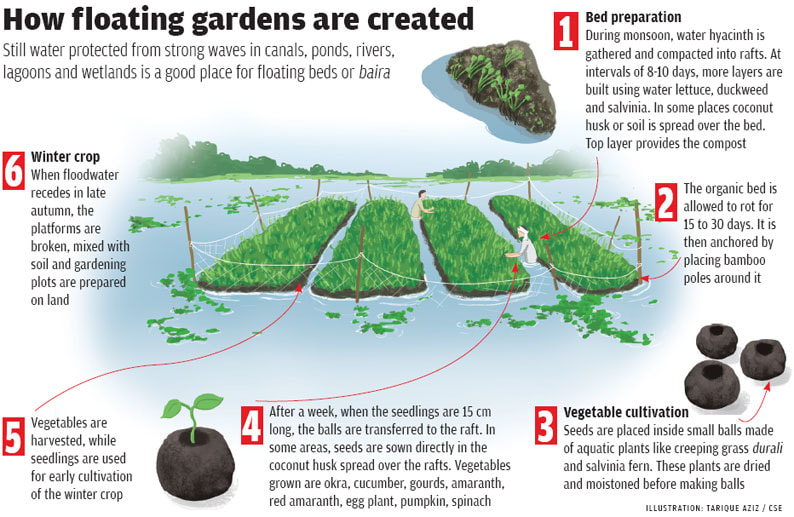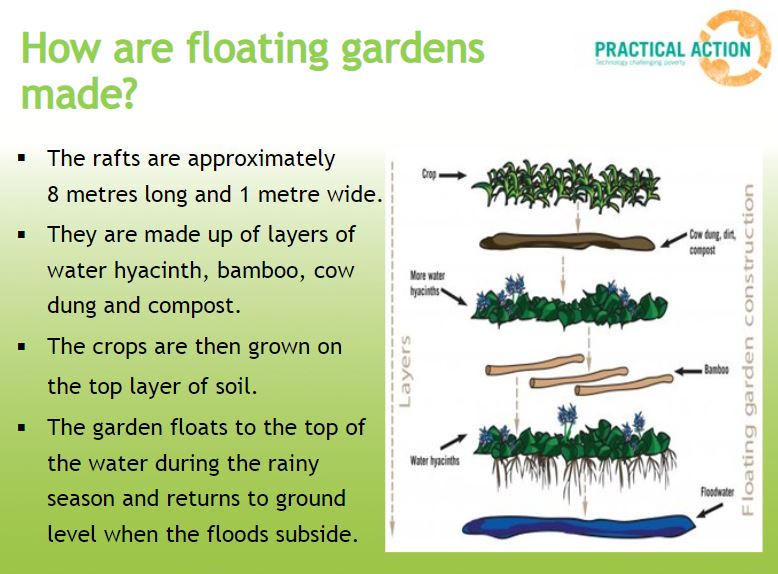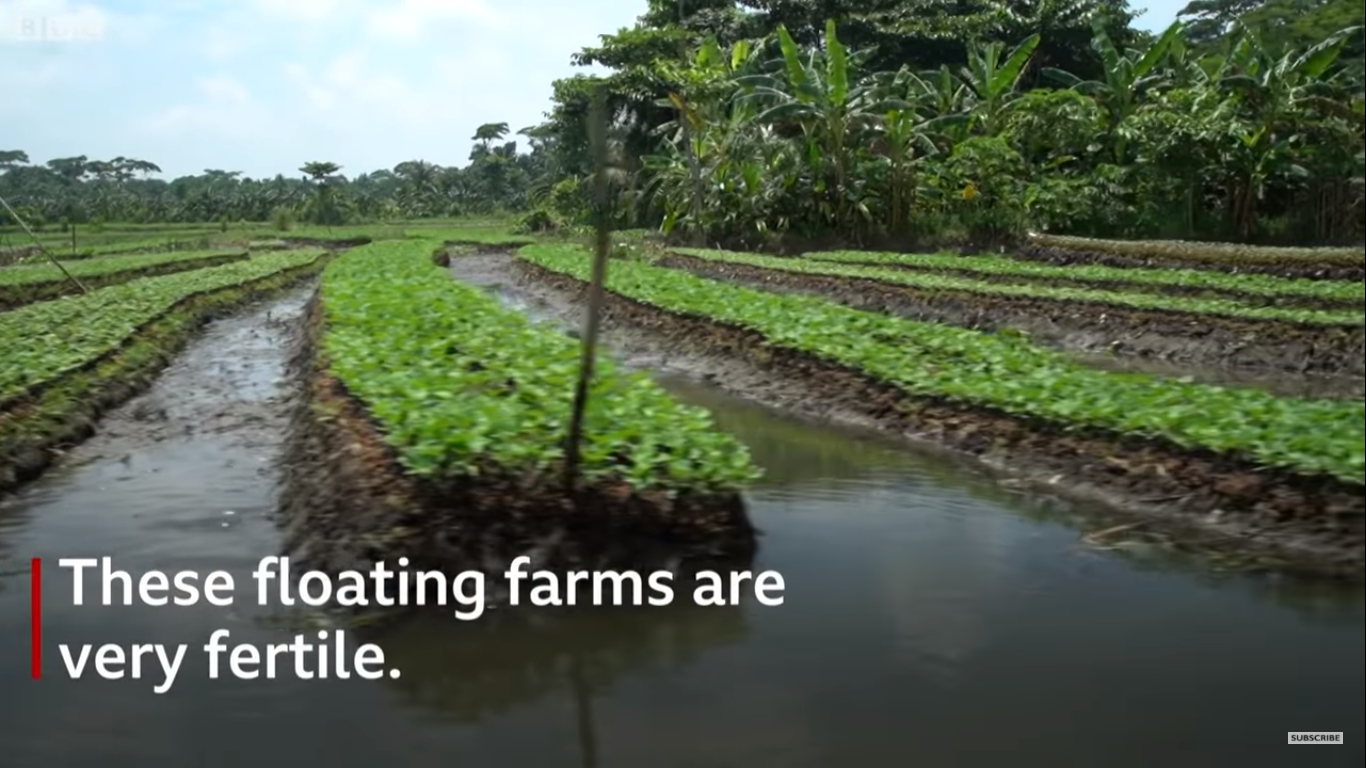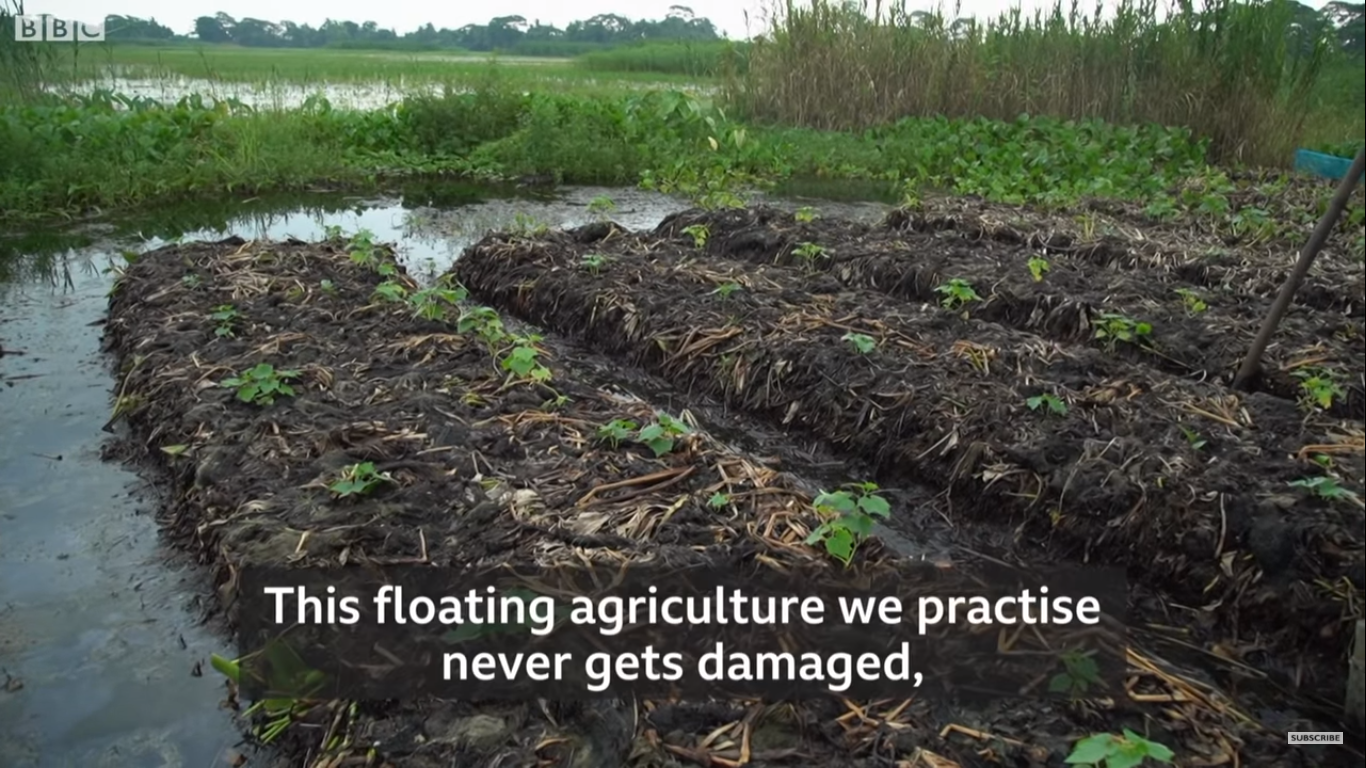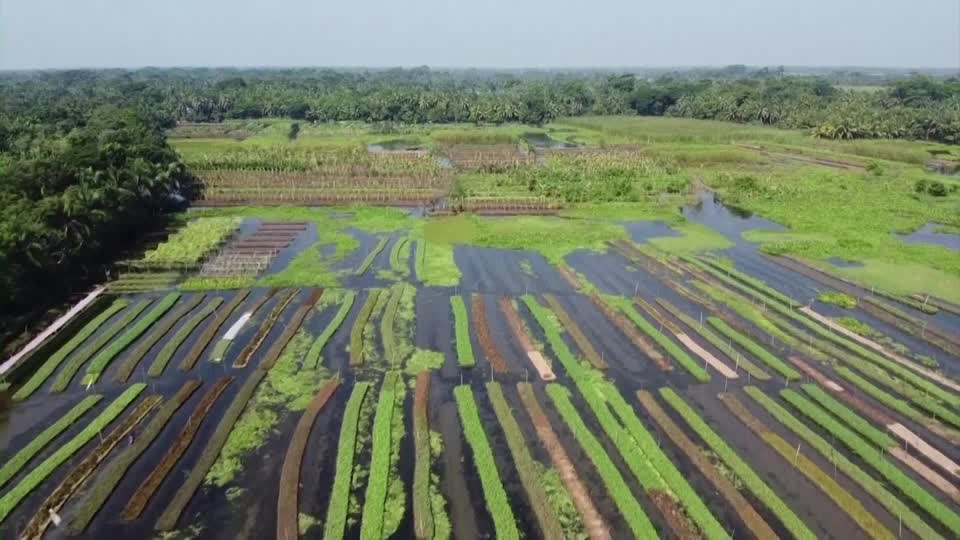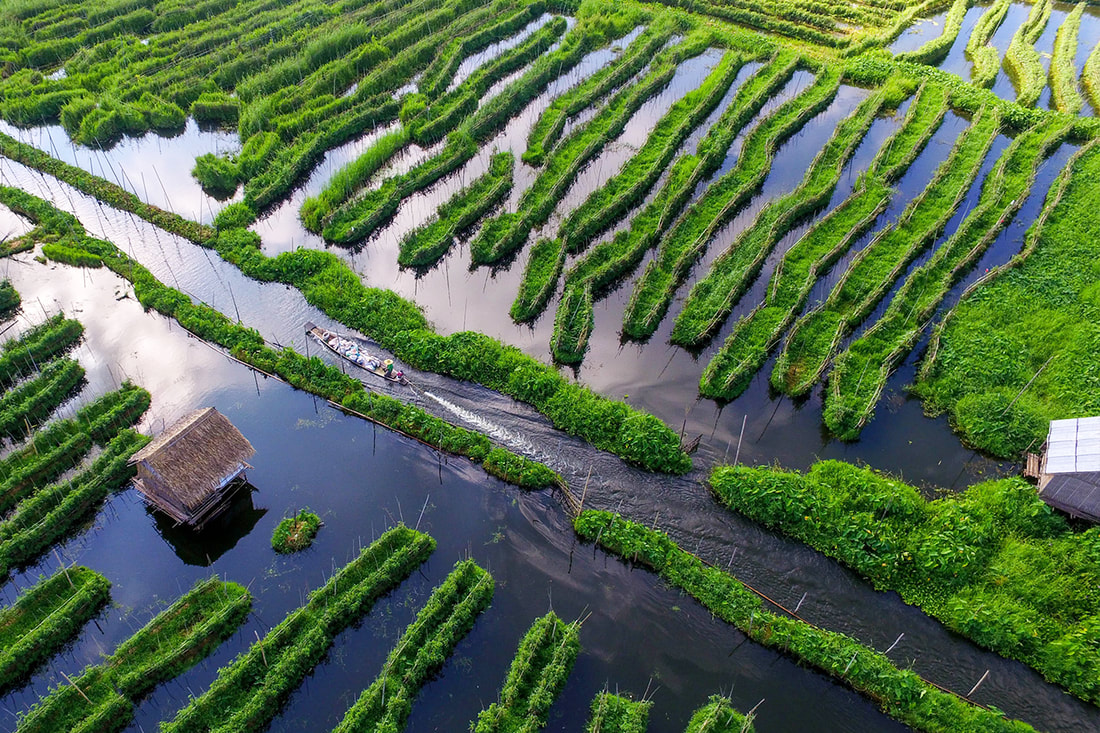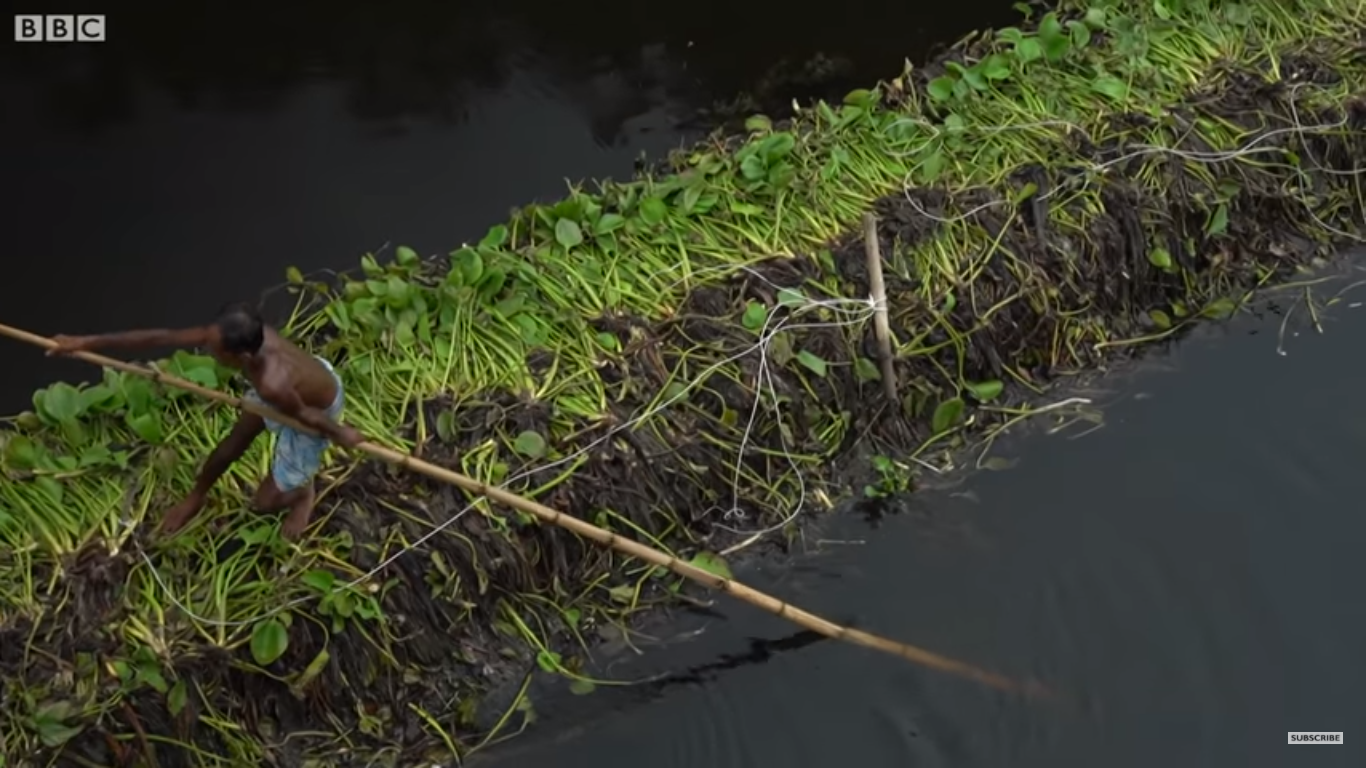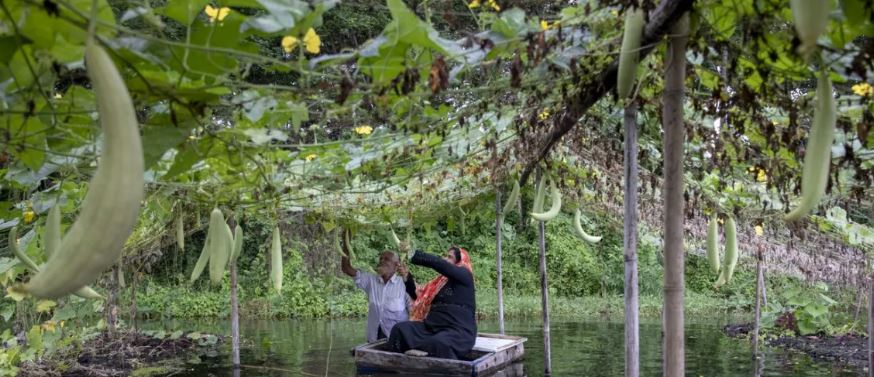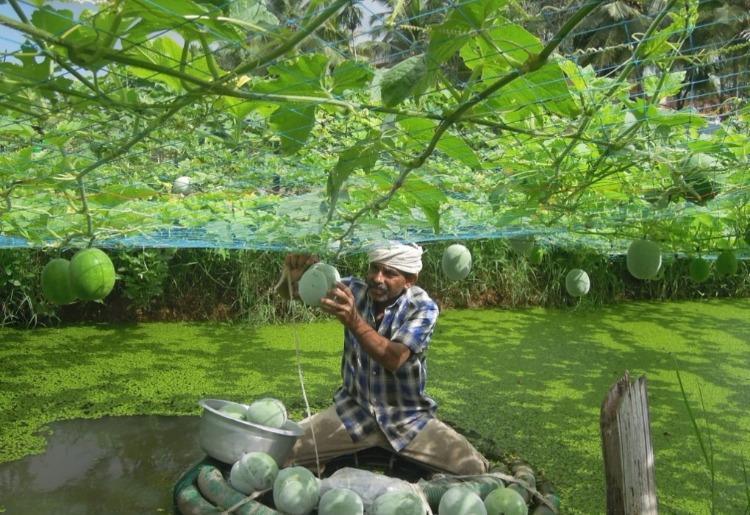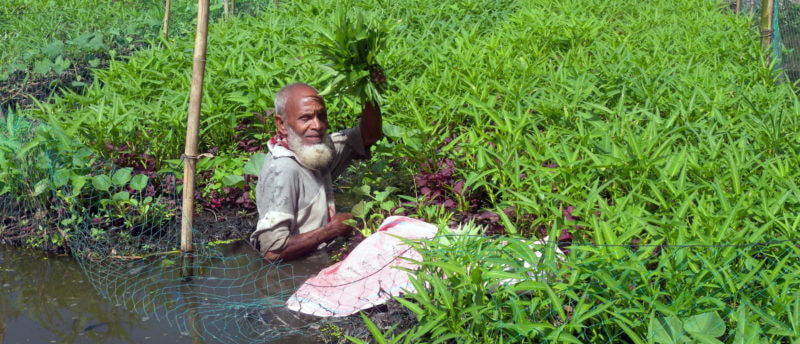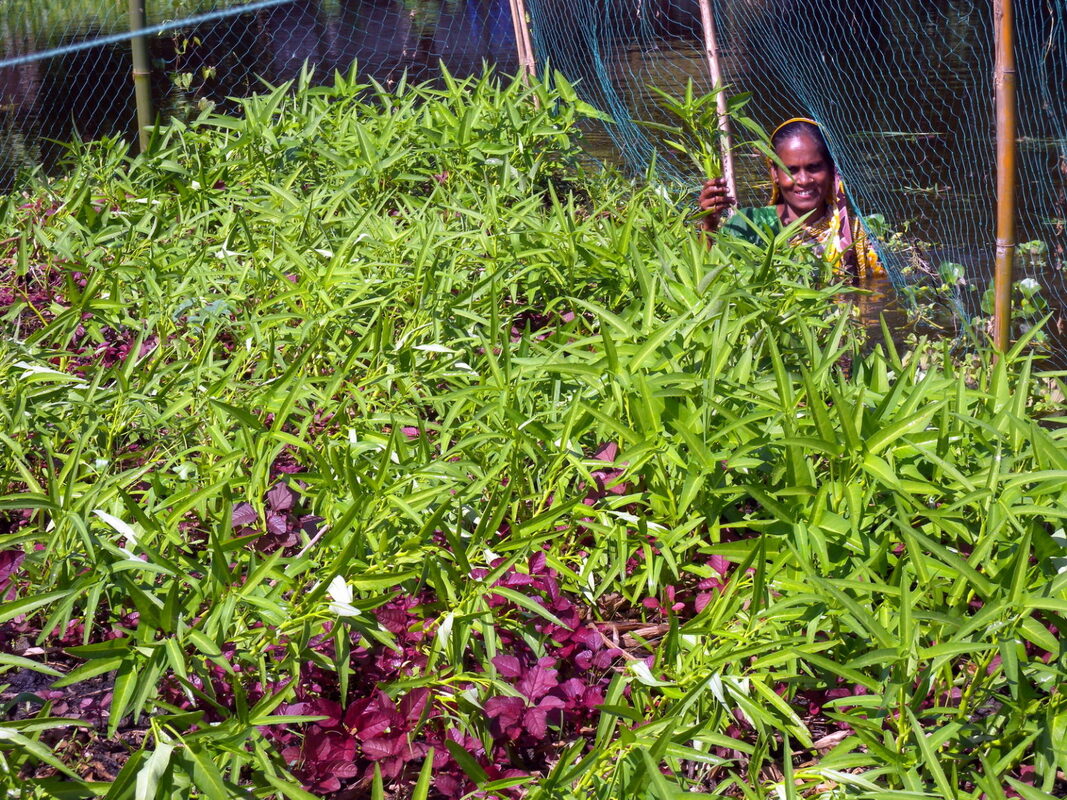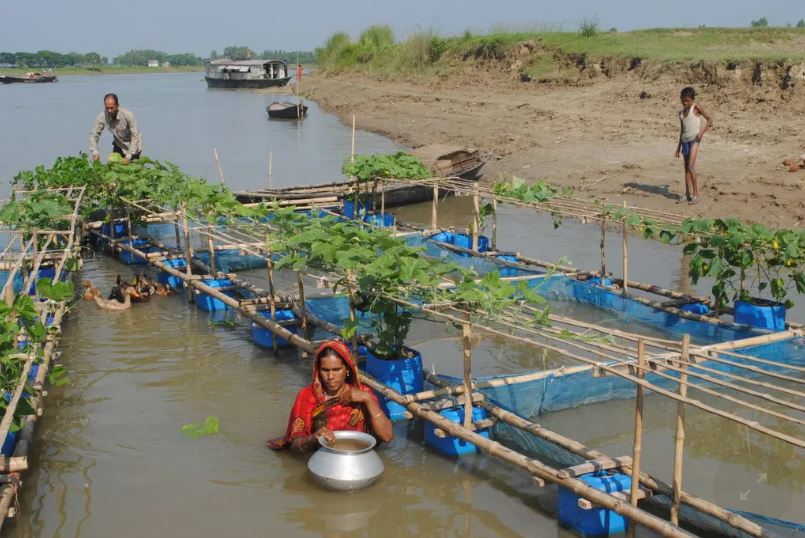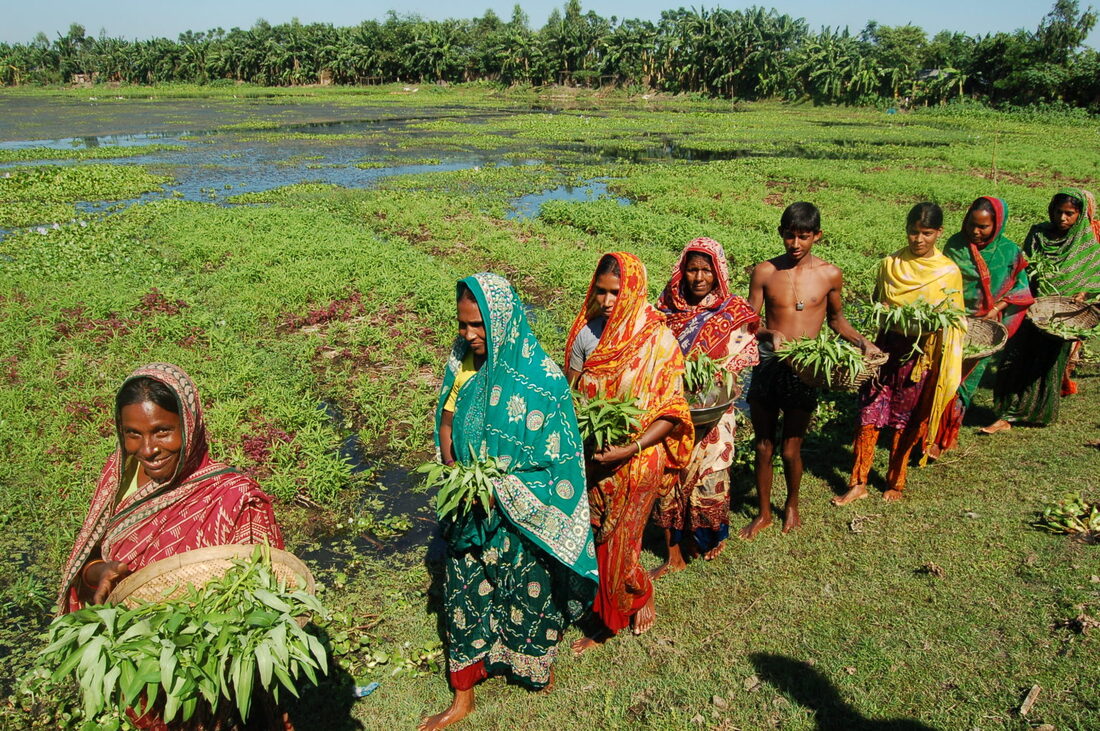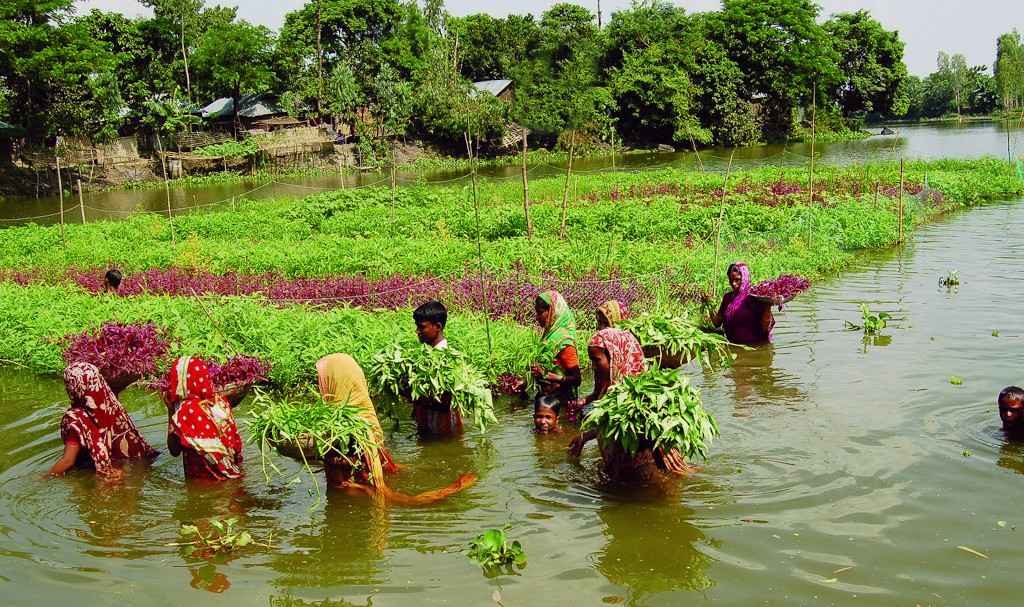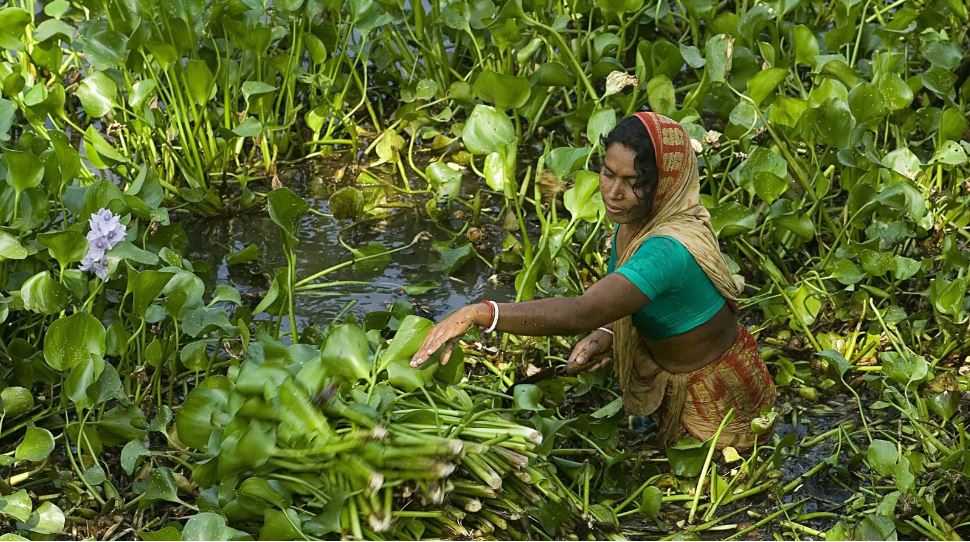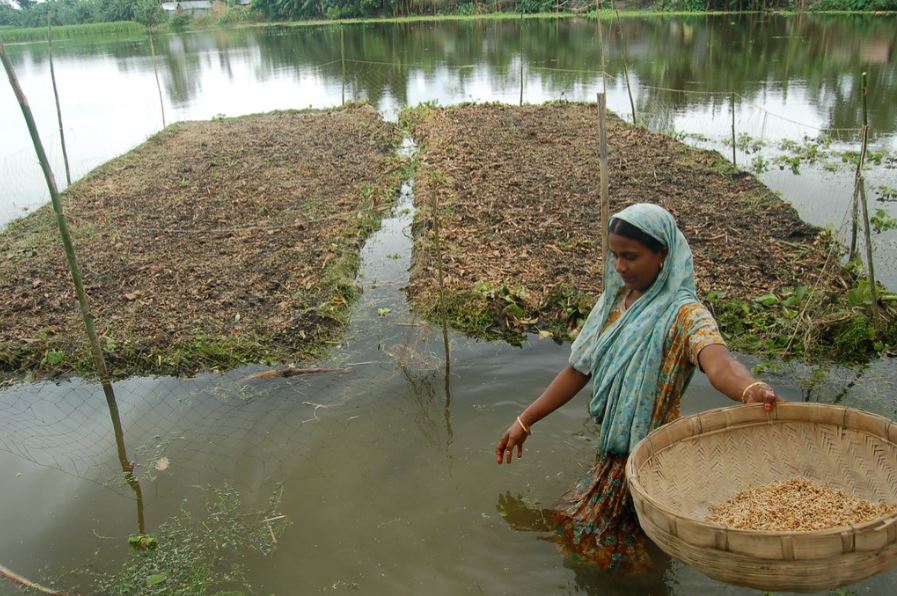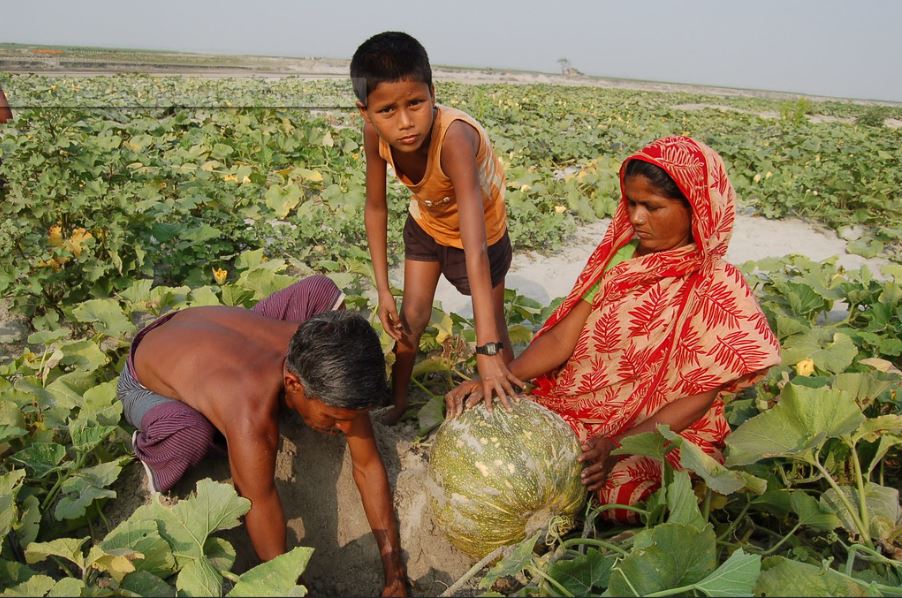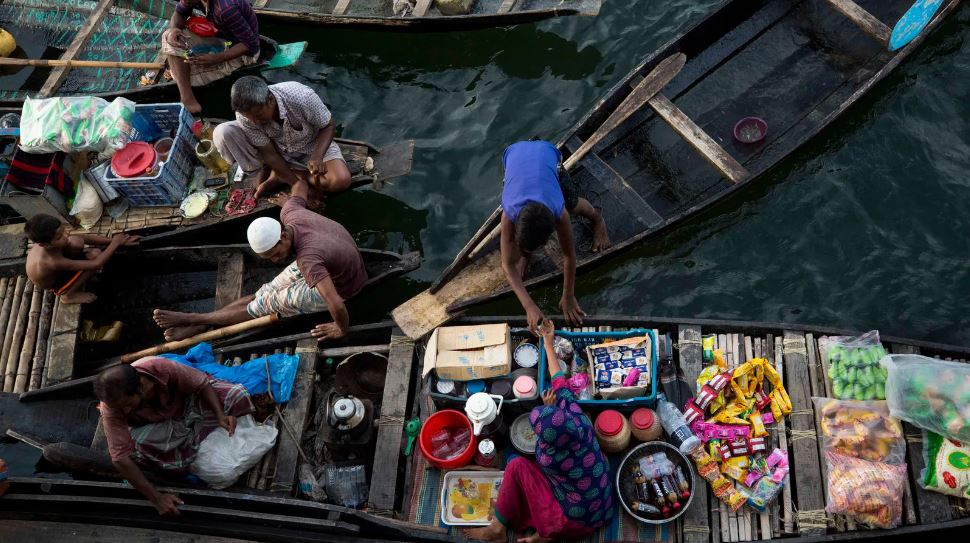12.12.2022
Bangladesh’s Farmers Revive Floating Farms As Seas Rise
Farmers in southwestern Bangladesh have revived a 200-year-old agricultural practice to battle the challenges emanating from floods, hurricanes and rising sea levels. The unique method, now practiced by about 6,000 farmers, may prove crucial in sustaining agriculture during a period of erratic monsoons and worsening climate crisis. The rafts, where farmers grow radish, cucumber, papaya, bitter gourd and tomato are woven from stems of invasive hyacinths. Earlier, the flooding season lasted for about five months every year. But now, the swampy area remains underwater for about eight to 10 months, and more land is now being flooded. Floating farms now cover about 157 hectares (388 acres) in Pirojpur district, with 120 hectares in Nazirpur that expanded from 80 hectares five years ago. As per Hazra, "It requires less space than conventional farming and does not need pesticides…When we're fighting the impact of global warming, floating farming could be the future." The floating farms, however, have resulted in lower profit margins. This year, Mostafa spent about 4,500 taka for a boatload of water hyacinths, much more than the 1,000 paid last year. The rafts, which are about 6m long, also need to be replaced with new ones every three to four months. Credit: DW
Poverty deprives people of adequate education, health care and of life's most basic necessities- safe living conditions (including clean air and clean drinking water) and an adequate food supply. The developed (industrialized) countries today account for roughly 20 percent of the world's population but control about 80 percent of the world's wealth.
Poverty and pollution seem to operate in a vicious cycle that, so far, has been hard to break. Even in the developed nations, the gap between the rich and the poor is evident in their respective social and environmental conditions.
Poverty and pollution seem to operate in a vicious cycle that, so far, has been hard to break. Even in the developed nations, the gap between the rich and the poor is evident in their respective social and environmental conditions.
